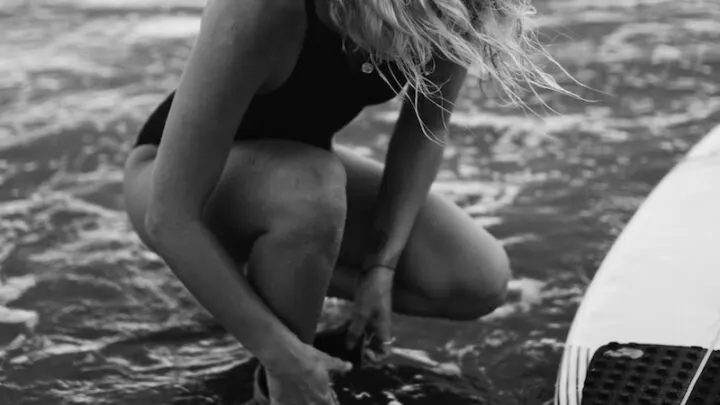With us ocean lovers often seeing first hand the damage caused by plastic pollution in the ocean, it feels only right that we play our part in reducing it. Traditional swimwear is usually made of plastic in some form or another, and we’ve all had that terrible bikini which falls apart after one summer of wear only to end up in landfill. Luckily, sustainable swimwear brands are appearing at a rapid rate, however this leaves us with another problem – how do we choose the right one for scuba diving?
We’ve put together the ultimate guide to choosing sustainable swimwear for scuba divers and ocean lovers – from which fabrics to look out for, how to know whether the brand you choose is truly sustainable or just pulling the eco-friendly wool over your eyes, to sharing our favourite brands for the best eco friendly bikinis, swimsuits and bodysuits.
Keep in mind that the most sustainable swimsuit is the one you already own, but if you really need to upgrade your scuba swimwear wardrobe read on for some help in making the right choice!
Which fabrics make up sustainable swimwear?
There are many different fibres and fabrics being used to make sustainable swimwear, so what should you be looking out for? Here are some of the most common sustainable swimwear fabrics and some of the brand names they might go by.
ECONYL
ECONYL is a form of recycled nylon, sourced predominantly from fishing line and carpets. These raw materials are regenerated via a four step process which makes a final product that is chemically identical to virgin (fossil fuel-based) nylon. The manufacturers estimate that the emissions of producing ECONYL are 90% lower than those of producing virgin nylon, and the fabric produced is endlessly recyclable back into future ECONYL yarn and products offering potential for closed-loop production systems. You may also find products made from Carvico Vita – this is a fabric which is produced from ECONYL yarn.
Recycled Polyester
If you’ve ever purchased something which claims to have been made with recycled bottles, you’re likely already familiar with recycled polyester. Polyester which would otherwise be destined for landfill is cleaned, broken down into small “flakes”, melted into pellets to later be formed into yarn, and eventually woven into fabrics. REPREVE is a common brand of recycled polyester.
Yulex
You may have heard of Yulex as an emerging material becoming popular in sustainable wetsuits. This fabric, produced from natural rubber, is biodegradable and a fantastic alternative to petroleum based rubbers. Whilst there aren’t any scuba-specific swimwear designers making the most of this yet, we predict this may become more popular as supportive, neoprene-style swimwear trends continue.
Natural Fibres
Arguably the best swimwear decision for the planet would be choosing a natural fibre as opposed to a man-made recycled one (read on to learn why). There are some swimwear manufacturers cleverly reinventing cotton and hemp to make them more flexible and more appropriate to underwater use. However, these natural fabrics may have a tendency to absorb water as well as sag or lose shape over time, and making them flexible often means combining them with elastane (i.e. plastic). When it comes to sustainability, it’s a delicate balance to find something which will be long lasting as well as causing minimal disruption to the environment when it’s produced in the first place.
The microfibre problem and how to care for recycled swimwear
One thing to consider is that all of the recycled fabrics mentioned above will still shed highly polluting microplastics, which makes some people refute the claims that recycled swimwear is good for the environment. We’d argue that it’s the lesser of two evils when compared to products made from virgin man made fabrics, and there are ways to take better care of recycled swimwear to ensure it sheds less microplastics. Bonus – this also helps to ensure it lasts longer, making it more sustainable in the long run.
Most microfibre pollution occurs when items are washed, as the fibres are soaked into water agitated during the washing process. Many of us are guilty of washing our items way too frequently, so unless swimwear is heavily soiled it generally doesn’t need a trip in the washing machine after every wear. Wash minimally and hand wash where possible; if you must use a machine, wash gently and on a low temperature. Stick to minimal detergent and avoid using fabric softeners as these can make fabrics less effective over time. If you are using a washing machine, you can use a guppy bag to contain the microfibres and prevent them washing into our waterways.
Keep your swimwear out of bright sunlight as much as possible (when not wearing it, i.e. when drying), and avoid the use of chemical sunscreens which can degrade fabrics. By using these tips you should get the longest life possible out of your recycled swimwear, and the longer you own it, the more sustainable it becomes!
How to avoid greenwashing in sustainable swimwear
A truly sustainable product goes beyond the item itself and spills into the ethics of the company. Some brands may claim the “sustainable” label as a trendy, woke buzzword, when in actual fact their eco credentials leave a lot to be desired. This is known as “greenwashing”, and it’s easier than you’d think to fall into the trap. It does take a little bit of work to tell the good from the bad, but here are some things to look out for to check whether a brand is truly sustainable or just doing a good job of pretending.
DO read full product descriptions. If something claims to be “made of recycled plastic bottles”, check the percentage to see if it’s still using virgin polyester too.
DON’T buy “sustainable” options from fast fashion retailers. If they’re producing clothing in bulk, they’re still creating pollution regardless of whether that specific bikini claims to have saved seven plastic bottles from landfill. It’s likely that the quality won’t upstand the demands needed of a swimsuit for scuba diving anyway, and chances are they’re exploiting their workers in the production process.
DO check whether the company values the people making their product; look for transparency about their supply and production chain.
DO choose products made using low impact dyes which require less water.
DO check what the product is being shipped in. Look for mentions of compostable/recycled outer packaging and minimal tags.
DON’T buy from halfway around the world just because the product is sustainable. Prioritise sustainable brands closer to home where possible. We’ve included the locations of our favourite brands below to help you with this.
DO prioritise brands which champion diversity. Not only is sustainability greenwashed, it’s whitewashed, and we should be celebrating the brands which represent a diverse range of bodies by including not just diverse skin colours, but also bigger bodies and people with disabilities.
DO look out for brands contributing to environmental efforts. Many of the best sustainable brands contribute to clean-ups, conservation, marine research, and action to governments in order to have a longer lasting impact on our planet’s wellbeing.
These do-s and don’t-s should steer you in the right direction when choosing sustainable brands. You’ll find that the price tag is generally higher, but you’ll know that you’ve made a better decision for the planet and these better quality products will last longer so you’ll need to buy less in the long term.
If you do want to cut the cost on future sustainable swimwear purchases, make sure to check out our Girls that Scuba Membership Card for offers on some incredible swimwear brands, as well as discounted dive liveaboards, scuba training, dive equipment, and scuba lifestyle products.
Best sustainable swimwear brands for scuba divers and ocean lovers
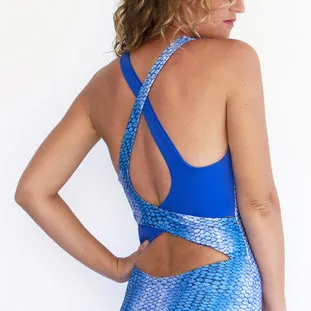
Sea Morgens (UK, product made in Indonesia)
Owned by one of our Girls that Scuba members, Sea Morgens has some of the most unique ocean-inspired prints we’ve seen. Beyond ticking all of our sustainable “do-s” listed above, they also use their waste fabric scraps to create bralettes, face masks and scrunchies. We love lounging around in their newly launched leggings, which are just as practical above the water as they are below the waves. GTS Membership Card holders receive 10% off.
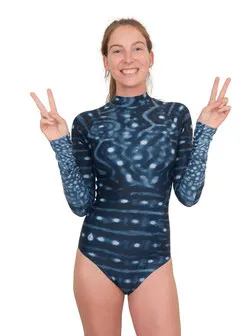
If realistic marine creature prints are your thing, Waterlust is the brand for you. Each of their prints funds a specific cause relating to the creature it features, and their sunsuits and leggings are great both for sun protection and as base layers for sliding into wetsuits.
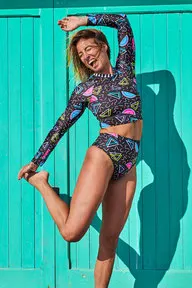
Euphoric Threads is an eco-conscious fashion label from the South West of England that empowers women with multifunctional tropical activewear for the WAVES and RAVES. All of their items are limited edition and lovingly handmade to order with recycled sustainable materials by textiles designer Laura Griffith.
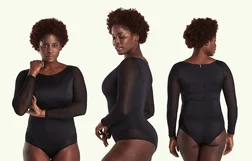
If you prefer a classic style over ocean prints, Deakin & Blue is the choice for you. Their products are designed on the basis of being “transformational” – from transforming the industry by championing regenerative materials, to transforming the way women feel about their bodies when wearing their products. We love their supportive designs and innovative sizing. GTS Membership Card holders receive 10% off.
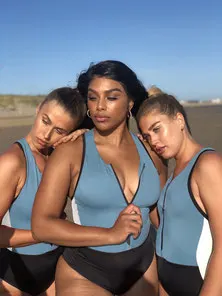
Stay Wild Swim are advocates of the ocean and encourage their customers to buy less but buy better. Their swimwear is beautiful, high quality and made to last and they encourage that instead of shopping for new swimwear every season, you should invest in one of their pieces and use it for years to come.
How to care for your recycled swimwear
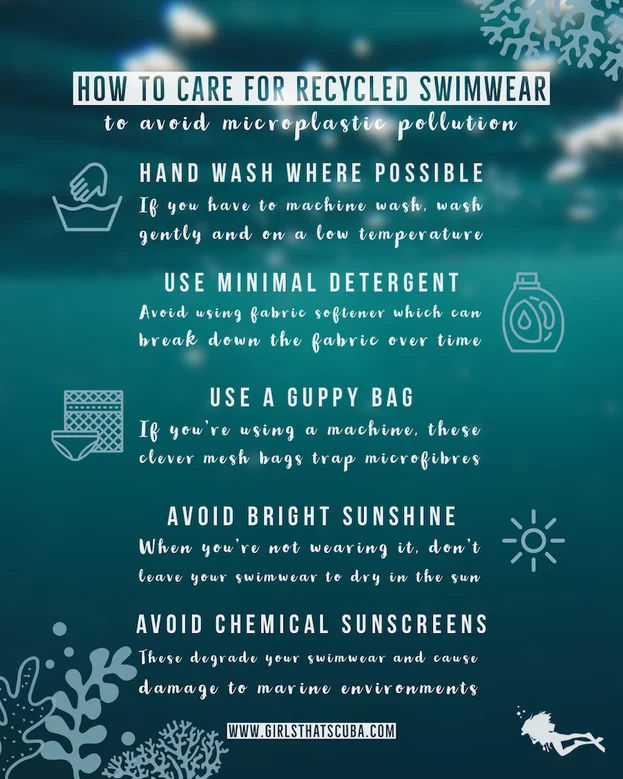
What’s your favourite sustainable swimwear brand? Let us know in the comments, continue the conversation in our Facebook group, or share with us on Instagram!
Disclaimer: Some of the links included in this article are affiliate links, which means we make a small profit if you make a purchase (at no additional cost to you). Including these links helps us to continue providing free content to you!

